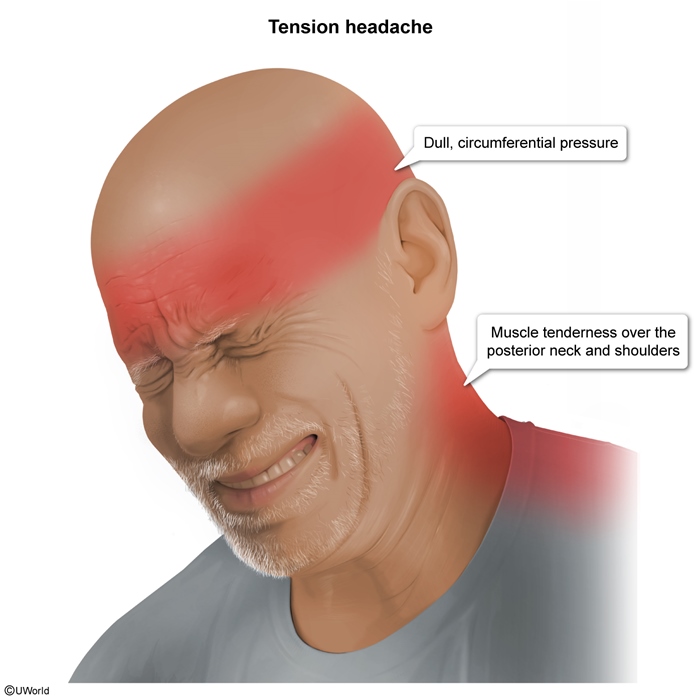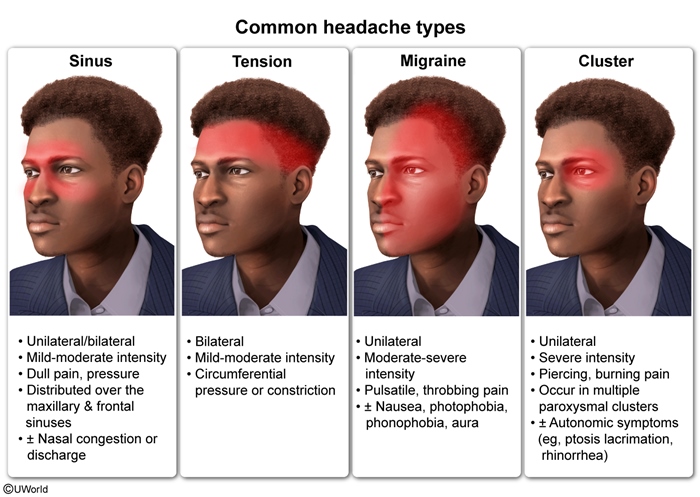Tension Headache
Article Sections
Introduction
Tension headaches are the most common type of headache disorder, characterized as bilateral, nonthrobbing headaches.
Pathophysiology
The pathophysiology of tension headaches is not completely understood. They are likely due to sensitization of peripheral nociceptors, leading to increased perception of myofascial pain.
Epidemiology and risk factors
Tension headaches are the most common type of headache in the population (affecting ~25% of the population) and can occur in children and adults. Tension headaches are slightly more prevalent in females. Patients with a prior history of migraines, sleep disorders, and comorbid depression or anxiety are at highest risk for developing tension headaches.
Clinical presentation
Tension headaches are often associated with the following (Figure 1):
- Mild to moderate intensity, bilateral headache
- Tight, dull, or band-like pain
- Increased muscle tenderness in the head, neck, or shoulders
Continue Learning with UWorld
Get the full Tension Headache article plus rich visuals, real-world cases, and in-depth insights from medical experts, all available through the UWorld Medical Library.
Figures

